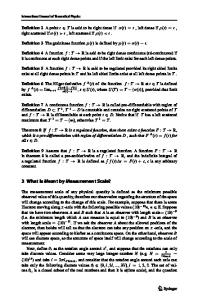Determination of the Plastic Behavior of Low Thermal Expansion Glass at the Nanometer Scale
- PDF / 198,104 Bytes
- 6 Pages / 612 x 792 pts (letter) Page_size
- 61 Downloads / 334 Views
G7.26.1
Determination of the Plastic Behavior of Low Thermal Expansion Glass at the Nanometer Scale Richard Tejeda,1 Roxann Engelstad,1 Edward Lovell,1 Anthony Anderson,2 Dehua Yang,2 and Kenneth Blaedel3 1 University of Wisconsin Computational Mechanics Center, Madison, WI 53706 2 Hysitron Incorporated, Minneapolis, MN 55439 3 Lawrence Livermore National Laboratory, Livermore, CA
ABSTRACT The nanometer-scale plastic behavior of two low thermal expansion glasses (ULE® and Zerodur®) was determined through a combination of nanoindentation experiments and finite element modeling. The finite element models were then extended to investigate aspects of the performance of these materials as extreme ultraviolet lithography reticles. INTRODUCTION Cleanroom specifications used for semiconductor manufacturing allow for a finite number of airborne particles in the production environment. Inevitably, these particles and other very small pieces of debris shed from equipment will find their way onto surfaces that are critical to the lithographic process. For example, in the exposure tool, the backside of the reticle can be electrostatically clamped to the chuck. Here entrapped debris could distort the reticle and its image as it is projected onto the wafer that is being exposed. Simulations have shown that a localized gap as small as 40 nm at the interface of the reticle and chuck in an extreme ultraviolet lithography (EUVL) exposure tool can adversely affect the performance of the system [1]. In order to fully characterize this problem, a detailed investigation of the mechanics of a particle being crushed between the reticle and chuck was performed. Preliminary finite element (FE) models have shown that the particle crush event involves a substantial amount of plastic deformation of the reticle, chuck, and particle. An accurate FE simulation must, therefore, incorporate the nanometer-scale plastic behavior of the components. Techniques for the determination of hardness and elastic properties of materials at small (mesoscale) dimensions are well established [2]. However, it is not obvious how to extract information such as a material’s yield strength and post-yield behavior from typical nanoindentation test data. This paper describes how the nonlinear material properties of two different glasses were derived using a combination of nanoindentation testing and FE modeling. The two types of glass investigated were ULE and Zerodur, which are principal candidates for the EUVL reticle and chuck material because of their low thermal expansivity. NANOINDENTATION PROCEDURE AND RESULTS Three key pieces of information were required from the nanoindentation experiments: 1) the elastic properties of the glass, 2) the geometry of the indenter tip, and 3) the force-deflection response of the materials during a non-elastic indentation. A Hysitron TriboIndenter® equipped with a conical diamond tip was used for all of the nanoindentation testing. The tip had a 60°
G7.26.2
included angle and a nominal radius of 1 µm. The nanoscale elastic prope
Data Loading...











